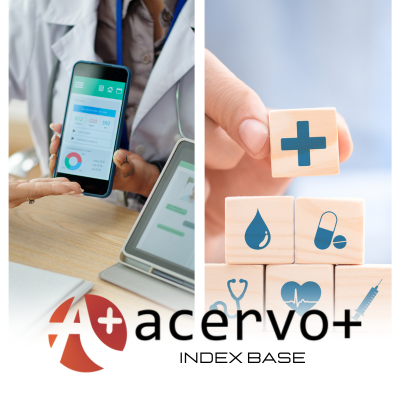Desenvolvimento e avaliação de um aplicativo para autoconsciência e prevenção em saúde pública
##plugins.themes.bootstrap3.article.main##
Resumo
Objetivo: Desenvolver e avaliar o aplicativo JOIA®, analisando seu impacto na autoconsciência e prevenção em saúde, além de sua usabilidade, segurança e privacidade no sistema público de saúde. Métodos: O estudo ocorreu em duas etapas: 1) desenvolvimento do JOIA® (para Android e iOS); 2) estudo intervencionista antes e depois, realizado em um hospital universitário público no sul do Brasil, com 100 pacientes acima de 50 anos. Foram avaliadas usabilidade (System Usability Scale - SUS) e conformidade com a Lei Geral de Proteção de Dados Pessoais (LGPD). Resultados: 90% dos pacientes baixaram e usaram o App, 95% consideraram útil e 93% demonstraram interesse em continuar usando. A autoconsciência aumentou 5 vezes, a satisfação com a saúde 32 vezes e o reconhecimento da prevenção 3,6 vezes. Conclusão: O App JOIA® facilitou a comunicação entre pacientes e profissionais, garantindo segurança conforme a LGPD. 68% avaliaram a usabilidade como intermediária a excelente, indicando áreas para melhorias na interface e suporte ao usuário. O App demonstrou-se eficaz para engajamento e prevenção em saúde, com potencial para otimizar o sistema público e reduzir custos.
##plugins.themes.bootstrap3.article.details##
Copyright © | Todos os direitos reservados.
A revista detém os direitos autorais exclusivos de publicação deste artigo nos termos da lei 9610/98.
Reprodução parcial
É livre o uso de partes do texto, figuras e questionário do artigo, sendo obrigatória a citação dos autores e revista.
Reprodução total
É expressamente proibida, devendo ser autorizada pela revista.
Referências
2. ABRAHAM C, et al. The Need for a Personalized. Core digital resource to facilitate health self-management. Prev Med. 2023; 173: 107569.
3. AGHER D, et al. Encouraging Behavior Changes and Preventing Cardiovascular Diseases Using the Prevent Connect Mobile Health App: Conception and Evaluation of App Quality. J Med Internet Res. 2022; 24(1): 25384.
4. ARGAWAL S, et al. WHO mHealth Technical Evidence Review Group. Guidelines for reporting of health interventions using mobile phones: mobile health (mHealth) evidence reporting and assessment (mERA) checklist. BMJ. 2016; 352: 1174.
5. BJARNADÓTTIR MV, et al. Health Care Usage During the COVID-19 Pandemic and the Adoption of Telemedicine: Retrospective Study of Chronic Disease Cohorts. J Med Internet Res. 2024; 26: 54991.
6. BORRELL-CARRIÓ F e EPSTEIN RM. Preventing Errors in Clinical Practice: A Call for Self-Awareness. Ann Fam Med. 2004; 2(4): 310-6.
7. BRASIL. Lei n° 13.709, de 14 de agosto de 2018. Presidência da República. Disponível em: https ://www.planalto.gov.br/ccivil_03/_ato2015-2018/2018/lei/l13709.htm. Acessado em: 22 de nove mbro de 2024.
8. BROOK J. SUS - A quick and dirty usability scale. In: Jordan PW, Thomas B, Weerdmeester BA, McClelland IL, editors. Usability Evaluation in Industry. London: Taylor & Francis; 1996; 189-94.
9. CUNHA AS, et al. Facilitators of and Barriers to Accessing Hospital Medical Specialty Telemedicine Consultations During the COVID-19 Pandemic: Systematic Review. J Med Internet Res. 2023; 25: 44188.
10. DENIZ-GARCIA A, et al. Quality, Usability, and Effectiveness of mHealth Apps and the Role of Artificial Intelligence: Current Scenario and Challenges. J Med Internet Res. 2023; 25: 44030.
11. HALL PA, et al. Neuroimaging, Neuromodulation, and Population Health: The Neuroscience of Chronic Disease Prevention. Ann N Y Acad Sci. 2018; 1428(1): 240-56.
12. KIRSHENBAUM E, et al. Telemedicine in Urology: The Socioeconomic Impact. Urol Clin North Am. 2021; 48(2): 215-22.
13. MACKINNON GE e BRITTAIN EL. Mobile Health Technologies in Cardiopulmonary Disease. Chest. 2020; 157(3): 654-64.
14. MARTINEZ-MARTIN P, et al. Measurement of Nonmotor Symptoms in Clinical Practice. Int Rev Neurobiol. 2017; 133: 291-345.
15. MIHALJCIC T, et al. Self-Awareness of Falls Risk Among Elderly Patients: Characterizing Awareness Deficits and Exploring Associated Factors. Arch Phys Med Rehabil. 2015; 96(12): 2145-52.
16. OGDEN LL, et al. Clinical Preventive Services for Older Adults: The Interface Between Personal Health Care and Public Health Services. Am J Public Health. 2012; 102(3): 419-25.
17. OLIVEIRA LMR, et al Tecnologia mHealth na prevenção e no controle de obesidade na perspectiva do letramento em saúde: Lisa Obesidade. Saúde Debate. 2018; 42: 714-23.
18. PATAIL K, et al What Are the Perceptions and Experiences of Adults Using Mobile Applications for Self-Management in Diabetes? A Systematic Review. BMJ Open. 2025; 15(1): 86671.
19. PETERSON AC, et al. Evaluating the 8‐item overactive bladder questionnaire (OAB‐v8) using item response theory. Neurourol Urodyn. 2018; 37: 1095-1100.
20. TAHA AR, et al. The Integration of mHealth Technologies in Telemedicine During the COVID-19 Era: A Cross-Sectional Study. PLoS One. 2022; 17(2): 264436.
21. VARMA N, et al. HRS/EHRA/APHRS/LAHRS/ACC/AHA Worldwide Practice Update for Telehealth and Arrhythmia Monitoring During and After a Pandemic. J Am Coll Cardiol. 2020; 76(11): 1363-74.
22. VICENTE MA, et al. Patient Engagement Using Telemedicine in Primary Care During COVID-19 Pandemic: A Trial Study. Int J Environ Res Public Health. 2022; 19(22): 14682.
23. VO V, et al. Patients' Perceptions of mHealth Apps: Meta-Ethnographic Review of Qualitative Studies. JMIR Mhealth Uhealth. 2019; 7(7): 13817.
24. WAALEN J. Mobile Health and Preventive Medicine. Med Clin North Am. 2023; 107(6): 1097-1108.
25. WANG H, et al. The Association of Mobile Health Applications With Self-Management Behaviors Among Adults With Chronic Conditions in the United States. Int J Environ Res Public Health. 2021; 18(19): 10351.

